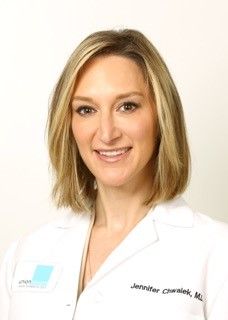- Acne
- Actinic Keratosis
- Aesthetics
- Alopecia
- Atopic Dermatitis
- Buy-and-Bill
- COVID-19
- Case-Based Roundtable
- Chronic Hand Eczema
- Chronic Spontaneous Urticaria
- Drug Watch
- Eczema
- General Dermatology
- Hidradenitis Suppurativa
- Melasma
- NP and PA
- Pediatric Dermatology
- Pigmentary Disorders
- Practice Management
- Precision Medicine and Biologics
- Prurigo Nodularis
- Psoriasis
- Psoriatic Arthritis
- Rare Disease
- Rosacea
- Skin Cancer
- Vitiligo
- Wound Care
Article
Cosmetic complications (and tips to avoid them)
Author(s):
As demand for quick fixes soars, so do complications. Dr. Jennifer Chwalek advises on how to identify, fix and avoid them.
As demand for quick fixes soars, so do complications. Dr. Jennifer Chwalek advises on how to identify, fix and avoid them. (©AndreyPopv/Shutterstock.com)

Dr. Chwalek

Consumer surveys performed in recent years show increasing interest and demand for cosmetic procedures. Often topping the list are laser hair removal, treatments for wrinkles with energy-based devices and body contouring, according to New York City dermatologist Jennifer Chwalek, M.D., who spoke Sunday, March 3, on the “Top 10 Cosmetic Procedure Complications and How to Fix Them” during the 2019 American Academy of Dermatology Annual Meeting in Washington, DC.
“As a result of consumer interest, medspas and other non-traditional medical settings have started offering treatments such as Botox [Allergan], fillers, as well as laser and body contouring procedures. In these settings it is not uncommon for patients to be treated by non-physician providers who have very little training. There is little to no regulation over who can perform these procedures depending on what state you are in,” Dr. Chwalek says.
The result has been a surge of complications and lawsuits, predominately from laser hair removal cases, according to Dr. Chwalek.
“It is important for dermatologists - whether or not they practice cosmetics - to be able to recognize these complications and understand how to treat them,” she says.
The most common complications occurring from laser and body contouring devices are burns and pigmentary alterations, including post-inflammatory hyper- or hypopigmentation, known as PIH, Dr. Chwalek says.
“This typically occurs when the fluence is too high. In the case of lasers, [it occurs] especially in darker-skinned individuals, or when there is a breach in contact with the device, in the case of body contouring devices,” she says.
To prevent these complications, DR. Chwalek offers these tips:
- Understand which patients are good candidates for treatment with a given device. For example, in the case of darker skinned patients, clinicians should use longer wavelengths (1064n m), especially when performing laser hair removal.
- Reduce the fluence and increase pulse duration to lessen the risk of burns and pigmentation problems.
- Use meticulous technique to prevent burns with body contouring or other energy devices.
“If a burn occurs, treating with low level light therapy or light-emitting diodes, topical steroids and sun protection may help to reduce PIH and expedite healing,” she says.
Disclosures:
Dr. Chwalek reports no relevant disclosures.
Newsletter
Like what you’re reading? Subscribe to Dermatology Times for weekly updates on therapies, innovations, and real-world practice tips.













